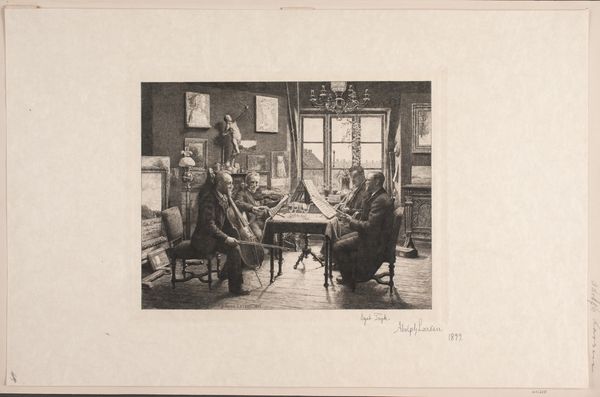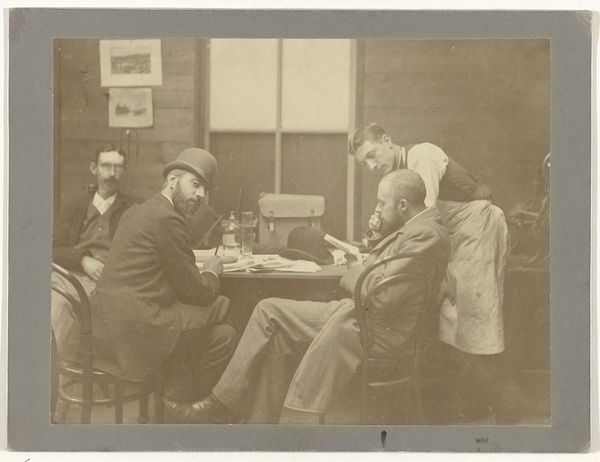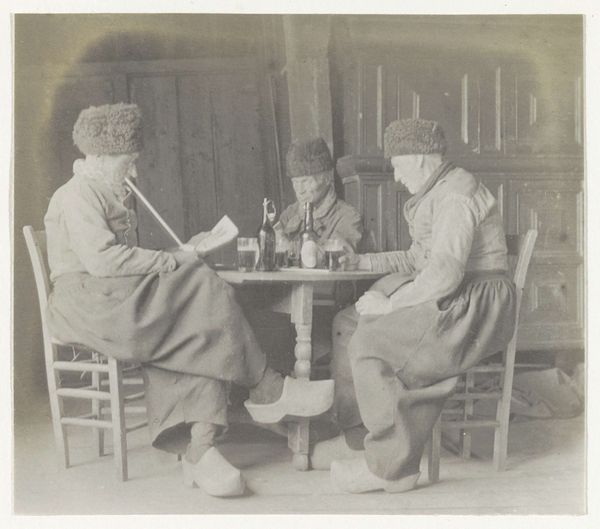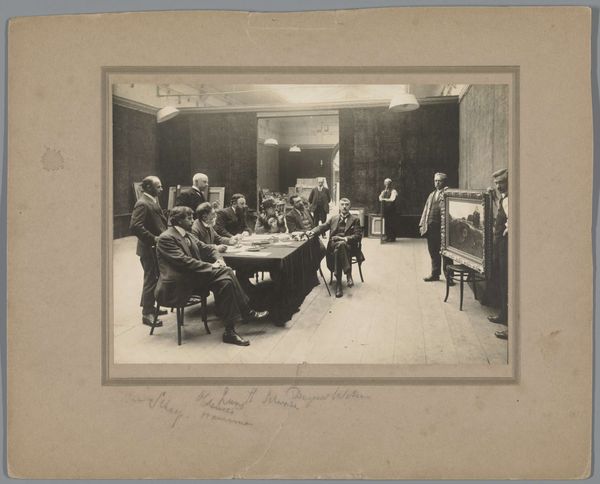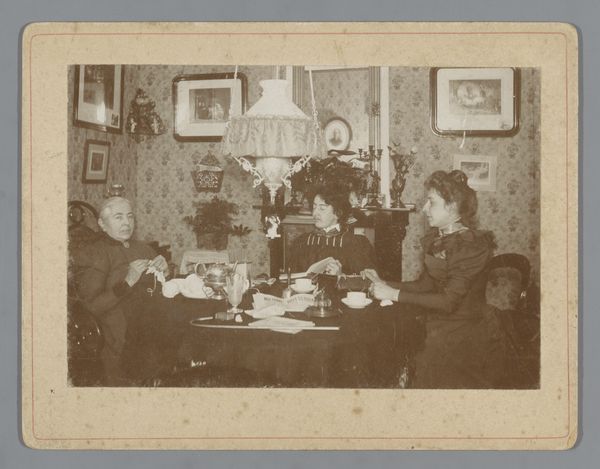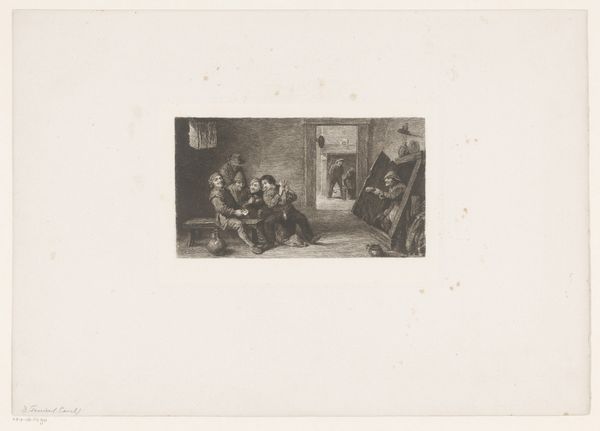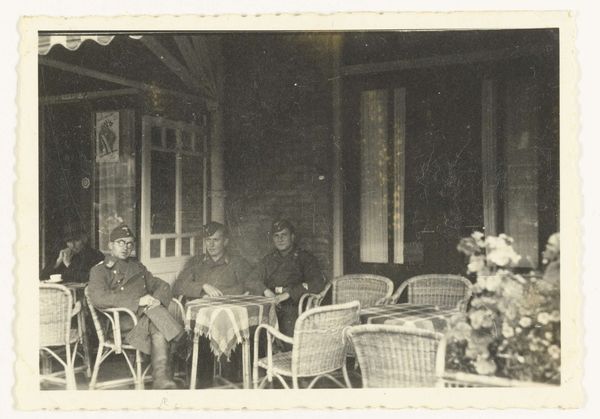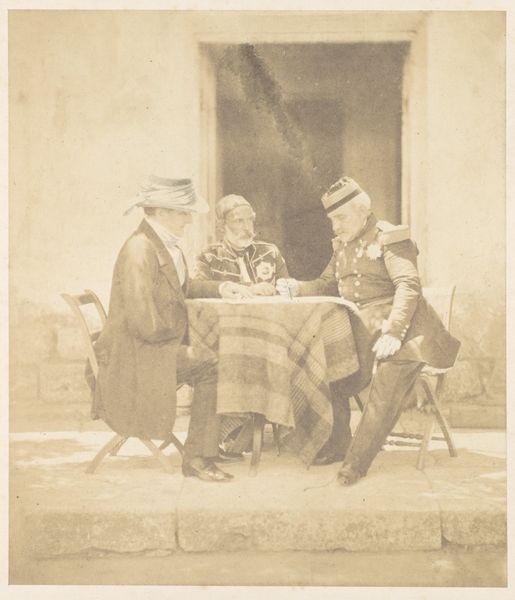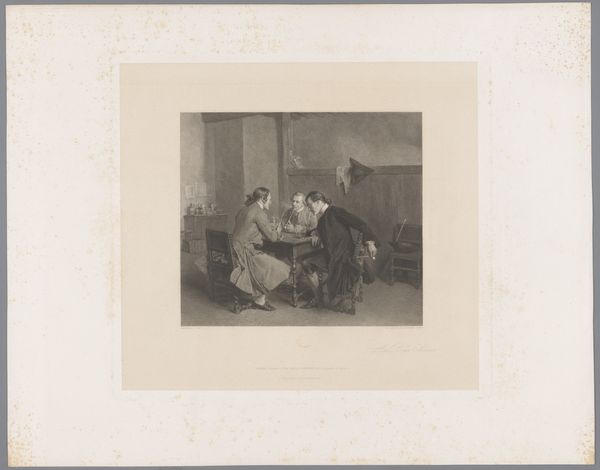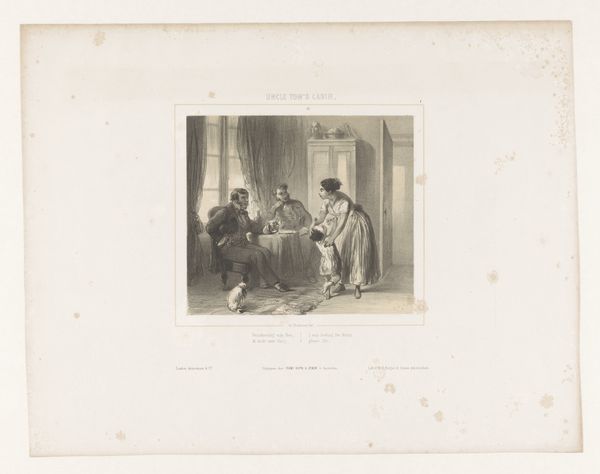
drawing, print, pencil, graphite
#
portrait
#
pencil drawn
#
drawing
# print
#
pencil sketch
#
pencil drawing
#
pencil
#
graphite
#
genre-painting
#
watercolor
#
realism
Dimensions: height 208 mm, width 270 mm
Copyright: Rijks Museum: Open Domain
Curator: Well, look at this; the atmosphere of this scene is immediately captivating. The expressions of the men, their focused gaze – it tells a story. Editor: Indeed. We are looking at "Three Card Players in a Café" by Frans Proost, made sometime between 1887 and 1892. It’s rendered in graphite and pencil. The artist uses simple materials to communicate something profound. The means of production were clearly accessible – paper, pencil – elevating the mundane social gathering to the level of fine art through the mastery of technique. Curator: Absolutely. What intrigues me is how Proost chooses to depict this everyday scene, almost elevating the ordinary to a kind of… civic ritual. It suggests the vital role such gathering places played. You notice how these cafes fostered a sense of community and conversation in late 19th-century Belgium. The composition has a gravity to it; not necessarily exciting, but certainly worth representing for some civic importance. Editor: The way Proost builds form with just subtle tonal shifts and hatching suggests labor. Every mark contributes, reflecting not only observation, but a mindful engagement with the process. And observe the varying depths of mark and darkness, they have consequences as compositional techniques to focus our eye on one area or the other. He transforms graphite on paper into almost palpable atmosphere. The print as commodity speaks too—replicable, accessible… Curator: Right, and this artwork certainly reflects broader cultural trends—the rise of realism in art, coupled with the democratizing forces at work in society. The museum's acquisition and display of the piece actively frames the narrative; we choose to remember this view of citizenship over others. Editor: It challenges the hierarchy that assumes only oils or sculpture have a high art-cultural value; that something rendered in pencil on paper isn't merely preparatory but could function as the end work, carrying value in its own right, democratizes who could engage with art. Curator: A fitting addition to our collection. These seemingly minor scenes and locations act as critical time-stamps of history. Editor: A very fitting subject, in its accessibility it's clear and transparent, offering more nuance and context as it comes more into focus.
Comments
No comments
Be the first to comment and join the conversation on the ultimate creative platform.

